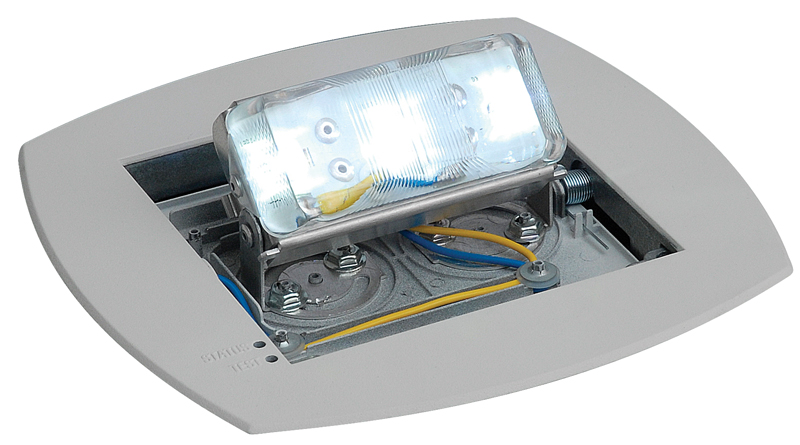How to Design More Aesthetic Emergency Lighting Systems
By Bill Lynch
The National Fire Protection Association (NFPA) and International Building Code (IBC) mandated that emergency lighting ensure sufficient light along the path of egress in the event of a power outage or other emergency. Although this is typically the domain of electrical engineers, many lighting designers and architects prefer to meet these requirements with aesthetic solutions that fit into the building’s overall design.
Dedicated emergency lighting, however, is often seen as utilitarian, obtrusive and even ugly. One of the most common, low-cost options involves two lamps and a bulky battery pack that is often referred to as a “bug-eye” light.
Fortunately, More Stylish Options Exist
At the top of this list is incorporating existing architectural lighting in the emergency lighting plan. In this approach, the architectural lights operate as normal. If utility power is lost, however, supplemental power can be supplied via an inverter.
“Our goal, if at all possible, is to have the architectural lighting system also double as the emergency lighting system,” said John Decker, IALD, principal, of Valencia, Calif.-based Lighting Design Studio, a multidisciplinary firm.
While this approach is ideal, there are many situations in which the existing lighting will not provide the requisite illumination along the entire path. When this occurs, lighting designers often seek out more high-end, stylish fixtures. Even such items as bug-eyes and exit signs are available in more aesthetic versions.
“The look is very important,” said Decker. “It may seem small, but it could make a difference in how you experience that space and everything is ‘an experience’ with architecture,” explained Decker. “So we try and find aesthetic alternatives to maintain the beauty of the space while still meeting code requirements.”
Stylish Emergency Lights
Although typically the responsibility of electrical engineers, Decker said this doesn’t mean architects and lighting designers do not have a role to play. He often reviews and comments on proposed emergency lighting solutions.
When a modern, streamlined look is required, Decker said he often recommends products from emergency lighting manufacturers, such as Isolite, that specialize in high-end alternatives. This can include more stylish versions of bug-eye lights as well as a variety of options that keep emergency lighting out of view until needed. This includes lighting that remains fully recessed behind two flat panel doors that open only when power is lost. Some are even designed to blend in with the existing décor by being painted or covered with wallpaper.
“The [more stylish] products look so nice and clean,” said Decker. “You don’t have to see a bug-eye on the wall, but in emergency loss of power, the doors open and the lamps pop out to do their work.”
Recessed LED emergency lighting mounted 18 inches above the floor is another option. The lights are directed towards the floor to more effectively illuminate the path of egress than traditional ceiling or wall-mounted emergency lights. “Lighting the path of egress from a lower vantage point makes sense in situations where there is a fire because all the smoke rises, and [if it were higher], it could block some of the light,” said Decker.
To read the entire article, check out the November/December issue of School Construction News.
Bill Lynch is president of Berwyn, Pa.-headquartered Isolite, an independent emergency lighting manufacturer focused on providing energy-efficient life safety solutions to North American and global markets.

